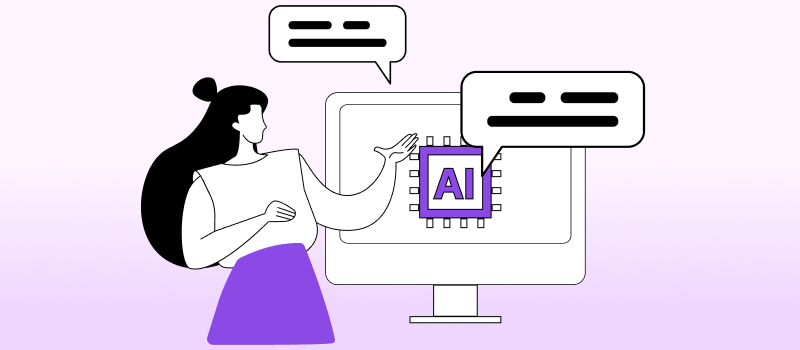Time tracking software is now applied by many companies, independent entrepreneurs and freelancers. And the popularity of time tracking tools is likely to grow even further since these tools produce many benefits for businesses and individuals, allowing them to eliminate inefficiencies and increase productivity multifold.
When it comes to choosing a time tracker, software as a service (SaaS) or rentware is the most common option. As the name suggests, this type of software is delivered as a service on a subscription basis. It is centrally hosted by a vendor who is also responsible for customer support and realization of any product improvements and upgrades.
These qualities of SaaS reduce maintenance costs for users significantly and endow them with more freedom to switch to other products without much risk. But depending on your needs and resource availability, self-hosted or on-premises time tracking software may be a better option – it can be installed on users’ own computers and run on in-house servers, which fosters fuller control and maximizes security.
In this article, we evaluate the two software delivery models to identify their advantages and drawbacks and help you see which one of them meets your interests best.
SaaS vs. Self Hosted Time Tracking: Strengths and Weaknesses
Maintenance Costs
The well-functioning hardware and IT infrastructures, as well as skilled technical support, are the major prerequisites for the proper work of any time tracking software. However, not every business can afford to invest in them. In this regard, SaaS is more advantageous than self-hosted software since instead of spending money to develop your own infrastructure, you may simply use a vendor’s servers. Plus, basic maintenance costs and customer support are already included in the majority of SaaS time trackers’ subscription fees, which eventually allows you to reduce software spend considerably.
However, it’s important to remember that every SaaS provider attends to the needs of their entire customer base. Hence, they may be limited in their ability to tackle some of the complex technical issues that individual clients experience, especially if these issues require a lot of time for their management. In this case, having competent IT professionals in your staff is a great benefit. Though the maintenance of a self hosted time tracking software may be costly in a way, you can always rely on higher-quality technical support with your own resources and even can save some money when the need to solve any difficult problems arises.
Data Security
A considerable degree of data privacy and security is the most recognized merit of self hosted time tracking software – by running a time tracker on your own premises and private clouds, you get total data ownership. And if you store time tracking data offline, you virtually face a zero risk of being hacked. In this case, the level of security depends merely on how good you are in preventing accidental data leaks and intentional breaches of confidentiality in your team.
When it comes to SaaS, it’s associated with many more security risks. This model implies that user data is shared with a vendor. Though software providers are legally obliged to process their customers’ data safely and keep it confidential, you have lesser control over who and when accesses or copies your information when it’s stored at somebody else’s premises.
Data Backups
Along with technical maintenance, SaaS time trackers include regular data backups in their subscription fees. When using an online version of a tool, you can expect with certainty that the vital information is going to be recovered if suddenly lost due to some major technical misfortune.
If you decide to use a piece of self hosted time tracking software, data backups will remain your own concern, just like technical maintenance. You will have to think in advance about the backup options available (i.e., extra servers) and how to recover data in case an inconceivable catastrophe damages your entire system.
Product Upgrades
It’s a common practice among software developers to upgrade their products and add new advanced features to them regularly. When you use a SaaS product, you can enjoy all the improvements that the vendor makes in their time tracking tool for free, as part of your monthly or yearly subscription. To implement a SaaS product’s enhanced functionality, you won’t have to make any effort at all, but you may need to spend some time learning how it works though.
Self-hosted software is a totally different story. If a business runs an internal version of a time tracking tool, it can remain without improvements for years (albeit some vendors offer free minor upgrades for self-hosted product users as well). Therefore, an in-house time tracker can become obsolete relatively quickly and unable to meet the changing needs of your business and employees in the long term.
Customization
Regardless of the abovementioned disadvantage, self hosted time tracking software offers many more opportunities for customization than SaaS. The latter can be customized to some level with multiple add-ons and app integrations. Also, many software products allow users to switch on and off some features depending on their current needs and preferences. But SaaS customization doesn’t usually go further than that.
As for a self-hosted time tracker, you have complete control over its source code and can make any modifications to it if necessary, which can actually help you cope with the lack of vendor-supported upgrades. Nevertheless, quality customizations require skills and time – in order to make use of this advantage of self-hosted software, you need to have enough resources.
Pricing
The prices for SaaS and self-hosted time trackers vary depending on their functionality and features. Both of the software types can be expensive and cheap, as well as free. For instance, plenty of open-source time tracking tools can be installed on users’ computers without any charge. And online versions of SaaS products, such as actiTIME, are frequently available at no cost for small teams and single users. Hence, the primary difference between SaaS and self-hosted software in terms of pricing is that subscription for the former is extended every month or year, whereas the license for the latter is purchased just once.
Of course, a one-time payment even for a single user will be significantly bigger compared to a monthly fee. But the overall price for an on-premises product is not that high, assuming that you’re going to use it without any time limits. In the long run, a self-hosted hour tracker may turn out to be more cost-efficient than SaaS. However, if you don’t have financial resources to make a one-time payment for a large team – consider that many time tracking tool developers charge clients per user – a monthly or yearly subscription is more suitable.
Exit Options
As the above pricing peculiarities suggest, it is much easier and cheaper to switch from one SaaS time tracking solution to another. The cost of changing a self-hosted product for an alternative option is much higher. Therefore, before buying an on-premises tool, make sure that it’s what you need and that the investment is worthwhile.
Luckily, many time tracking products offer a free trial period for those in search. For example, you can test out actiTIME for as much as 30 days at no charge! Sign up for an online trial period today to see if this timesheet tool works for you and make your mind up about which software type to choose.
















































